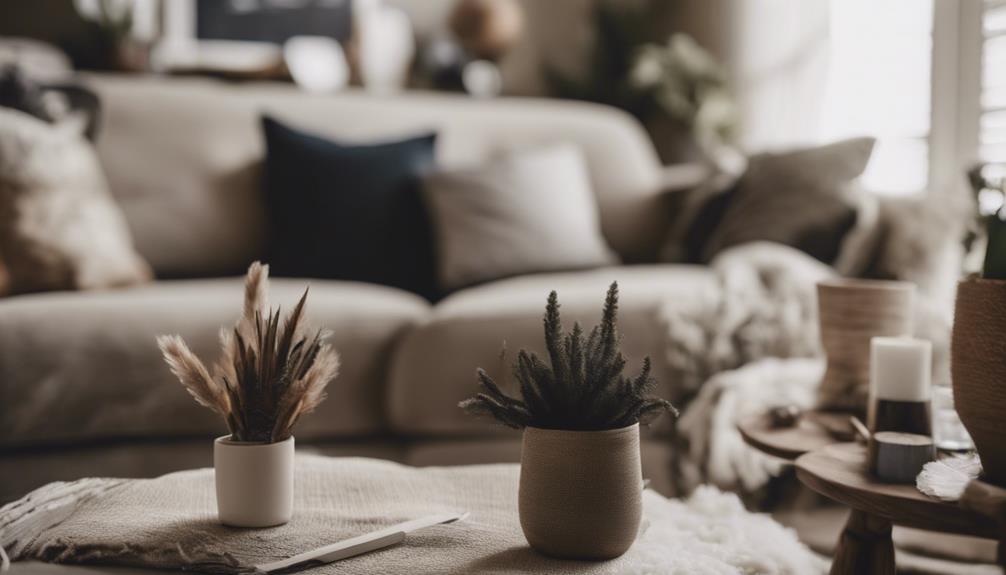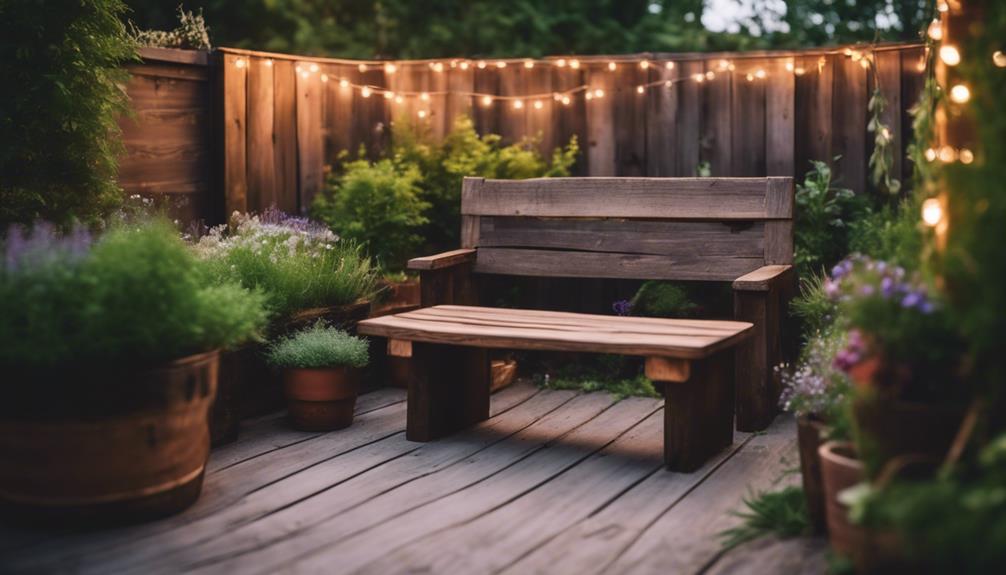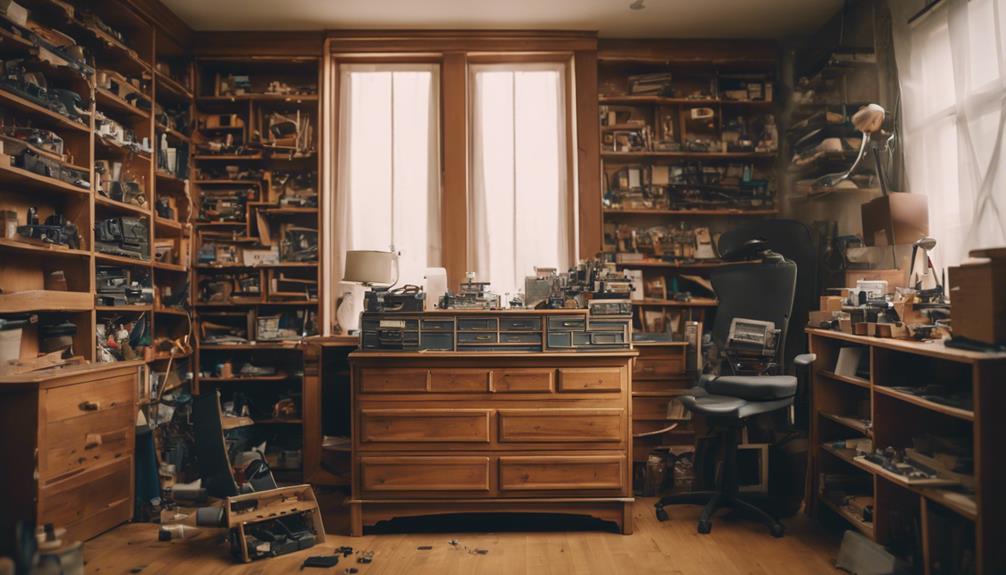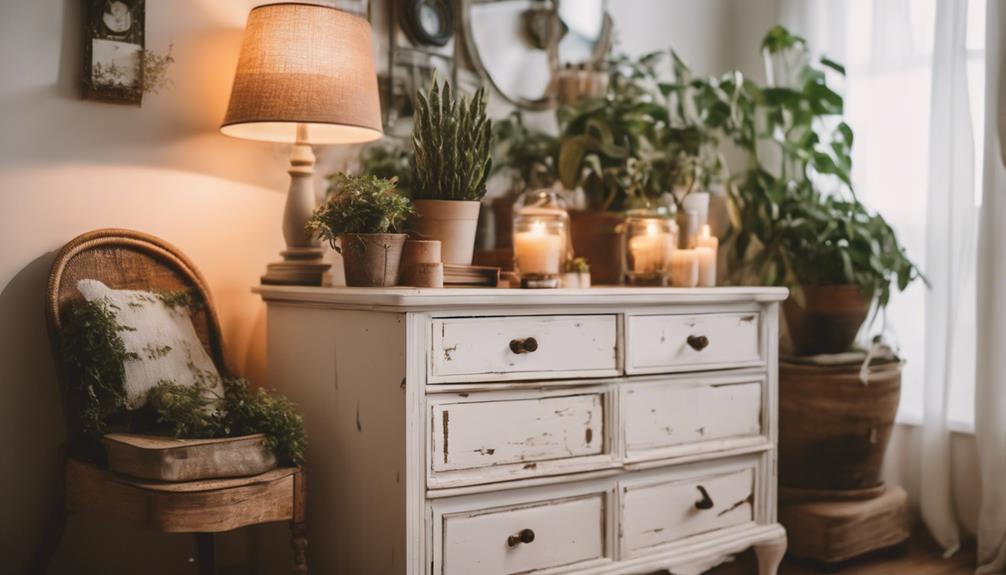In recent years, home decor has surged in popularity due to evolving design trends and growing consumer focus on home aesthetics. The global home decor market value reached $647.4 million in 2022 and is projected to hit $1.1 billion by 2032. Factors like trendy design influences, social media exposure, and the desire for personalized spaces are key drivers of its popularity. With sustainability trends, materials like natural wood and organic cotton are gaining favor. If you explore further, you'll discover the impact of e-commerce, industry growth trends, consumer preferences, and sustainability trends shaping the dynamic world of home decor.
Key Takeaways
- Home decor popularity is driven by trendy designs and social media influence.
- Consumers seek unique and stylish decor options for personalized spaces.
- Growing interest in eco-friendly and sustainable home decor choices.
- Unique styles like maximalism and vintage designs offer diverse options.
- Sustainability trends in home decor reflect consumer concern for the environment.
Global Home Decor Market Overview
As we explore the Global Home Decor Market Overview, it becomes evident that the industry's value has surged to $647.4 million in 2022 and is poised to reach $1.1 billion by 2032. This growth is fueled by the surge in popularity of home decor products such as furniture and textiles. The increasing disposable income and rising living standards in emerging countries have played a significant role in expanding the market.
Additionally, the market is highly fragmented, with a mix of international and regional players shaping its dynamics. Key industry players like Duresta Upholstery Ltd., Forbo International SA, and Ashley Furniture Industries Ltd. hold considerable influence over market trends and developments. This landscape of the Global Home Decor Market is constantly evolving, driven by consumer preferences, economic factors, and innovative product offerings.
Stay tuned as we explore further into the factors driving the popularity of home decor in our next subtopic.
Factors Driving Home Decor Popularity

Factors like trendy design influences and social media exposure are key drivers behind the increasing popularity of home decor.
As disposable incomes rise, consumers are seeking unique and stylish decor options, often influenced by what they see on platforms like Instagram.
This growing interest in aesthetically pleasing and personalized spaces is propelling the home decor market forward.
Trendy Design Influences
Exploring the dynamic interplay of design influences drives the popularity of home decor choices in today's market. Social media platforms like Instagram shape trends, with eco-friendly and sustainable options appealing to environmentally conscious consumers.
Increasing disposable income and evolving lifestyle trends contribute to the surge in home decor products. Unique styles such as maximalism and vintage designs offer diverse decoration options.
The market reflects a blend of cultural exchange, showcasing varied influences to cater to consumer tastes. These factors collectively drive the current home decor landscape, influencing consumer preferences and pushing the boundaries of design trends in a constantly evolving market.
Social Media Exposure
Our engagement with social media platforms like Instagram and Pinterest greatly influences the popularity of home decor trends. These digital platforms play a pivotal role in showcasing diverse aesthetics, democratizing styles, and inspiring design choices for consumers.
By curating lifestyles and interior design ideas, social media shapes consumer preferences in home decor considerably. Platforms like Instagram and Pinterest not only provide a plethora of design options but also enhance the global recognition of specific trends, ultimately impacting consumer buying behavior.
The visual nature of these platforms makes it easier for individuals to discover new trends, explore different design possibilities, and stay updated on the latest home decor styles, contributing to the continuous evolution of the industry.
Home Decor Industry Growth Trends
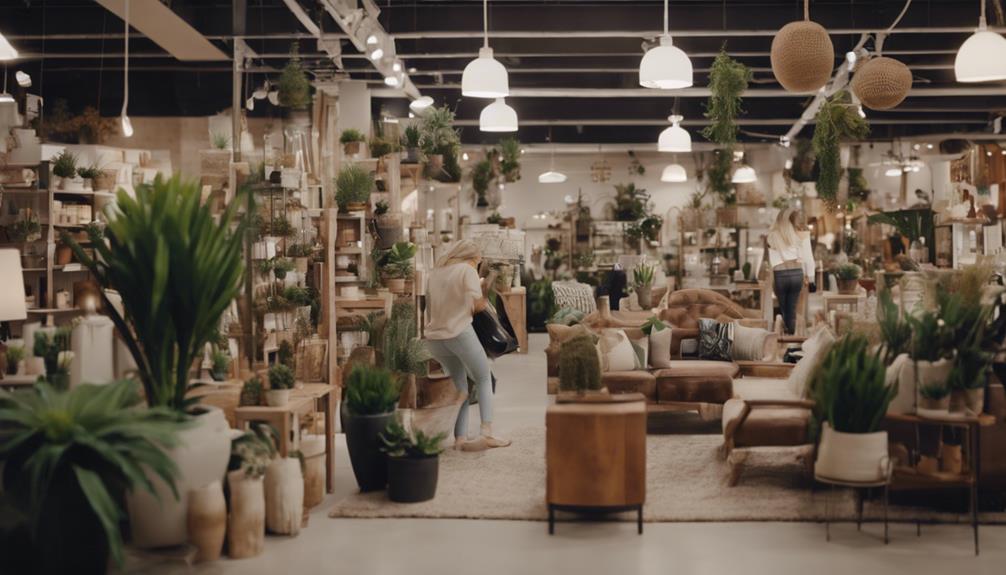
The Home Decor industry's growth trends are driven by consumer demand, technological advancements, and a shift towards e-commerce distribution. In the United States, the market is projected to grow at a CAGR of 4.11% from 2024 to 2029. Key players such as Inter IKEA Systems BV, Bed Bath & Beyond Inc., and Ashley Furniture Industries, Inc. are leading this expansion. Market trends indicate a rising demand for luxury home decor, house renovations, and an increase in e-commerce distribution channels. The industry, with a projected value of USD 252.82 billion in 2029, is influenced by the real estate sector and evolving technology, benefiting both large and small firms. Despite a low market concentration, gradual growth is expected due to consumer demand and the compact housing trend.
| Market Growth | Key Players | Industry Trends |
|---|---|---|
| 4.11% CAGR | Inter IKEA Systems BV | Luxury home decor |
| Bed Bath & Beyond Inc | House renovations | |
| Ashley Furniture Ind. | E-commerce distribution |
Impact of E-Commerce on Home Decor
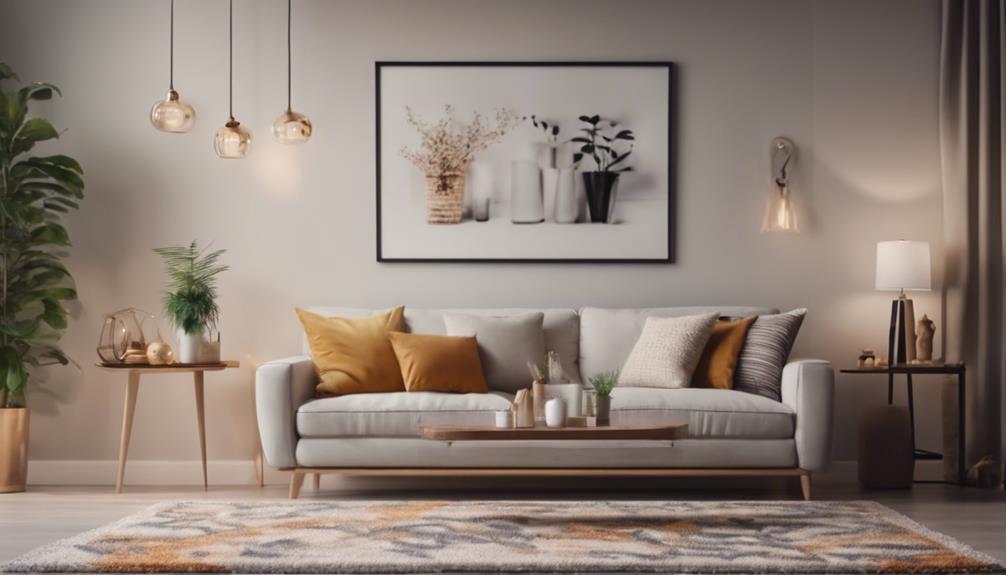
E-commerce's impact on the home decor industry is undeniable, driving significant growth and reshaping consumer shopping habits. Online platforms have revolutionized the way we shop for home decor products, offering convenience, a wide array of options, and easy comparison shopping. This shift towards e-commerce distribution hasn't only provided consumers with more choices but also promoted brand transparency and loyalty through direct-to-consumer sales channels.
The convenience of online shopping for home decor items has transformed the industry landscape, influencing consumer behavior and preferences. With just a few clicks, customers can explore various styles, prices, and brands, making informed decisions from the comfort of their homes. This accessibility and transparency have changed how people interact with home decor retailers, creating a more competitive market where companies aim to offer unique products and exceptional customer experiences. As e-commerce continues to thrive, its impact on the home decor sector will likely persist, shaping the way we decorate and personalize our living spaces.
Consumer Preferences in Home Decor
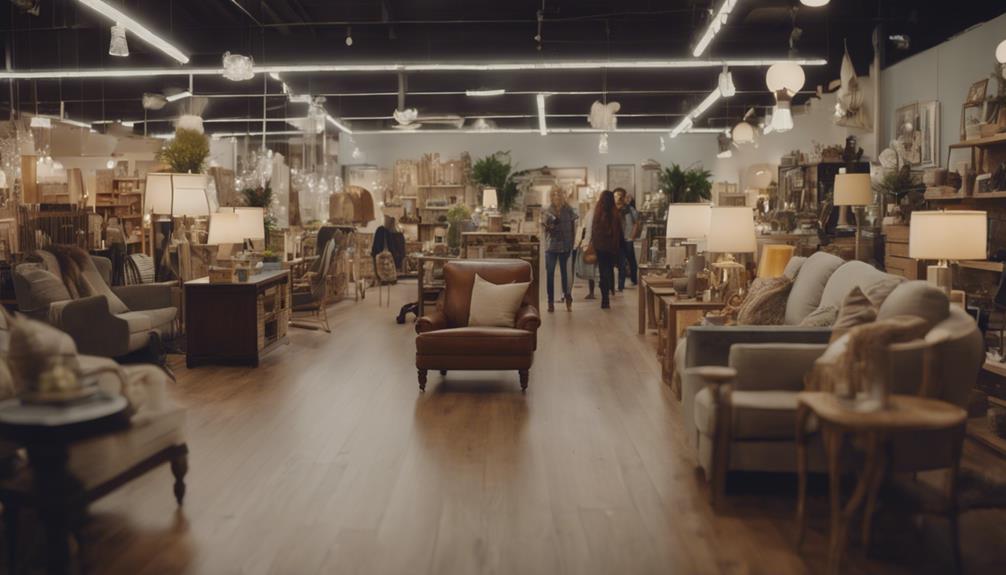
Consumer preferences in home decor are influenced by a variety of factors, including style preferences, color trends, and material choices. These elements play an essential role in shaping the overall look and feel of a living space.
Understanding these aspects can help consumers create a home that reflects their personal taste and lifestyle.
Style Preferences in Decor
In today's diverse home decor landscape, style preferences vary widely among consumers, ranging from minimalistic to bold and vibrant designs.
Eco-friendly and sustainable options are gaining traction, appealing to environmentally conscious individuals.
Vintage and retro styles are experiencing a resurgence, attracting those who appreciate unique and nostalgic elements in their decor.
Bold and vibrant designs, also known as maximalism, are on the rise, allowing homeowners to make a statement with their living spaces.
The shift towards eclectic choices reflects a trend of blending different styles, colors, and textures for a personalized and diverse aesthetic.
As consumers seek to express their individuality through home decor, the market continues to offer a wide array of options to cater to various style preferences.
Color Trends in Decor
Exploring the domain of home decor color trends reveals a dynamic landscape where consumer preferences shape the ambiance and style of living spaces. Neutral colors like white, beige, and gray are timeless choices offering versatility and calm, while bold and vibrant colors such as emerald green and navy blue add personality and energy. Pastel hues like blush pink create a soothing atmosphere, and metallic tones in gold and silver bring luxury to interior spaces. The table below summarizes these color trends in home decor:
| Category | Examples | Description |
|---|---|---|
| Neutral Colors | White, Beige, Gray | Timeless, versatile, calming |
| Bold Colors | Emerald Green, Navy Blue | Personality, energy |
| Pastel Hues | Blush Pink, Soft Lavender | Soothing, serene |
| Metallic Tones | Gold, Silver, Copper | Luxury, sophistication |
Material Choices in Decor
Opting for sustainable and eco-friendly materials is becoming increasingly popular in today's home decor choices. Consumer preferences lean towards natural wood, bamboo, recycled glass, and organic cotton for a more environmentally conscious approach. These materials aren't only durable but also ethically sourced, meeting the demand for eco-friendly options.
The shift towards using sustainable materials in home decor reflects a growing trend of responsible consumer choices and environmentally friendly lifestyles. Eco-conscious consumers are driving this change, seeking furniture, textiles, and decor items that align with their values.
Choosing materials that are both aesthetically pleasing and environmentally sustainable has become a key consideration for many individuals looking to create a stylish yet eco-friendly home environment.
Sustainability Trends in Home Decor
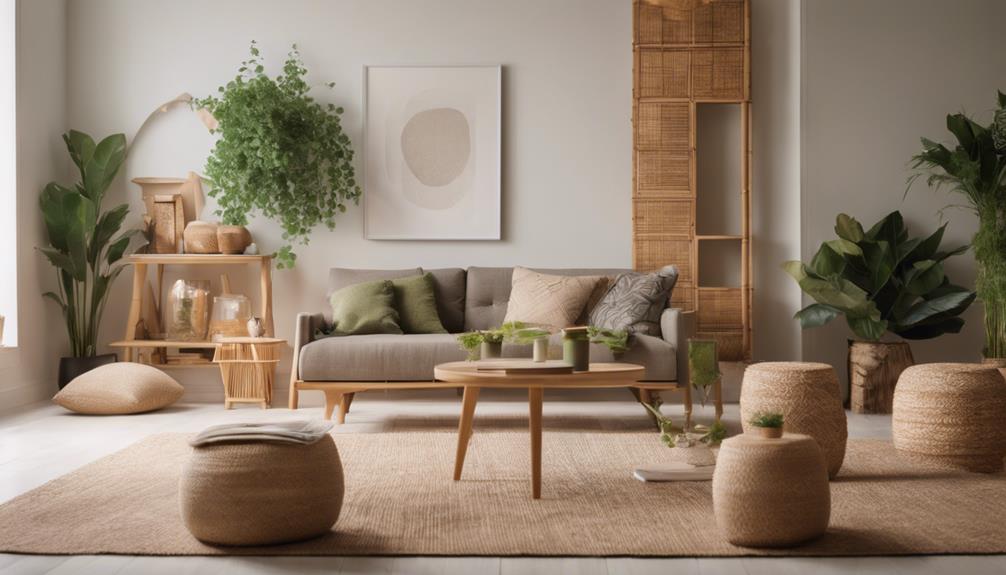
Embracing sustainability, the home decor industry is witnessing a significant shift towards eco-conscious practices and materials. This trend is driven by a growing environmental awareness and a desire for healthier living spaces.
Key aspects of sustainability trends in home decor include:
- Sustainable home decor trends are gaining traction worldwide, emphasizing eco-friendly materials.
- Consumers are opting for products like furniture made from recycled materials and energy-efficient lighting.
- Many brands now offer organic textiles, non-toxic paints, and ethically sourced materials in their collections.
- Biophilic design, integrating natural elements indoors, is a prominent feature, fostering a connection to nature and well-being.
- The shift towards sustainable home decor reflects a broader societal concern for environmental issues and a collective effort to create spaces that promote both individual and planetary health.
Frequently Asked Questions
Is There a Demand for Home Decor?
Yes, there's a significant demand for home decor products. Factors such as increasing disposable incomes, a preference for eco-friendly items, and a desire for luxury decor are driving this demand.
The market is also seeing a trend towards personalized and unique decor products. This indicates a strong interest in diverse and distinctive home decor items among consumers globally.
How Big Is the Market for Home Decor?
The home decor market is substantial, with the United States leading in generating revenue of US$35,440 million.
This market is projected to reach USD 252.82 billion by 2029, with a compound annual growth rate of 4.11% from 2024.
Various product categories like furniture, home textiles, and lighting cater to different consumer preferences.
Key players include Inter IKEA Systems BV and Bed Bath & Beyond Inc.
Is There a Market for Home Decor?
There's indeed a thriving market for home decor, driven by factors like rising disposable income and urbanization.
This industry, valued at $647.4 million in 2022 and projected to reach $1.1 billion by 2032, showcases a competitive landscape with major players such as Inter IKEA Systems BV and Ashley Furniture Industries.
Despite challenges like counterfeit products and raw material costs, consumer demand for furniture, textiles, and floor coverings continues to grow.
What Is the Outlook for the Home Decor Industry?
We project steady growth for the home decor industry in the US, with revenues expected to increase from USD 206.70 billion in 2024 to USD 252.82 billion in 2029, at a CAGR of 4.11%.
E-commerce distribution is on the rise, real estate plays a significant role in shaping customer interest, and house renovations are trending.
In the global market, revenue is forecasted to hit US$333.4 billion by 2030, driven by factors like rising disposable income and eco-friendly preferences.
Conclusion
To sum up, the home decor industry is experiencing a surge in popularity worldwide. Factors such as changing consumer preferences, the convenience of e-commerce, and a growing emphasis on sustainability are driving this trend.
As more people seek to personalize their living spaces and create environments that reflect their unique style, the demand for home decor products continues to grow.
It's clear that home decor isn't just a trend, but a thriving industry that's here to stay.
